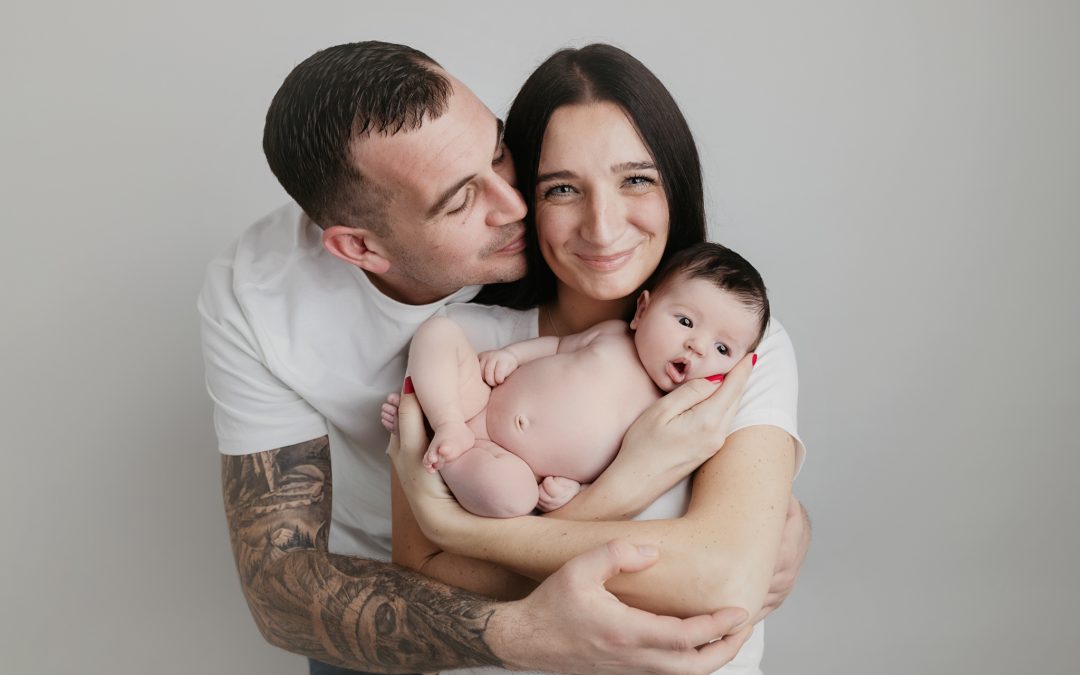Let’s continue our journey to preparing for labour and delivery!
If you have missed the first part of our article, you can find it here: www.evagudphotography.co.uk/preparing-for-labour/
Preparing for Labour: Pushing and Birth: Navigating the Final Stage
As your body enters the exhilarating phase of pushing and birth, you’re on the cusp of meeting your precious baby. This stage marks the culmination of your incredible journey into motherhood, and with the right preparation and support, you can confidently embrace this transformative moment.
The second stage of labour, pushing and birth, commences when your cervix is fully dilated to 10 centimetres. This is the cue to begin pushing, as your little one begins their journey through the birthing canal.
Finding a comfortable birthing position is crucial during this phase. Your midwife or birthing partner can assist you in discovering the position that feels best for you, whether it’s on all fours, kneeling, squatting, or lying down on your side or back.
When your body is ready, you may feel a natural urge to push, similar to the sensation of having a bowel movement. Your midwife or doctor will guide you through each contraction, encouraging you to push effectively.
During this phase, your birthing partner can be a pillar of support, physically assisting your body as you push and offering emotional encouragement. Remember to take deep breaths and breathe through each contraction, helping you stay focused and calm.
If you’ve chosen to use the “comb method” for pain relief, you can continue to use it during pushing to manage discomfort. Some women find that this unconventional technique provides a helpful distraction, making the intensity of labour more manageable.
As you progress through the powerful journey of pushing, your baby’s head will emerge into the world, making way for the rest of their body to follow suit. With each push, you’ll be drawing closer to the precious moment of meeting your newborn.
In the blink of an eye, your birthing team will welcome your baby into the world, and their cries will fill the room, enveloping you in joy and wonder. You’ve successfully navigated the transformative stages of labour, and now, it’s time to relish in the magic of holding your newborn in your arms.

Placenta Delivery: Post-Birth Considerations
Following the momentous arrival of your baby, there’s one more essential step in the birthing process – delivering the placenta. Understanding this final stage of labour will prepare you for the after-birth process and help you make informed decisions for your postnatal care.
After your baby is born, your womb will naturally contract, causing the placenta to detach. There are two methods for delivering the placenta, and you may choose the one that aligns with your birthing plan and preferences.
Active Method:
The active method involves receiving an oxytocin injection into your thigh shortly after birth. The oxytocin will stimulate uterine contractions, aiding in the detachment of the placenta. After about 5 minutes, your midwife will gently tug on the umbilical cord to assist in the delivery of the placenta.
The active method is quicker compared to the natural method, but it’s essential to note that the oxytocin injection may cause some women to feel nauseous. If you opt for this approach, your midwife will closely monitor you throughout the process, ensuring your well-being and comfort.
Natural Method:
On the other hand, the natural method involves waiting for your womb to contract naturally and the placenta to detach without the assistance of medication. This process can take up to an hour after your baby’s birth, after which you’ll need to push the placenta out.
While the natural method avoids medication, it can carry a slightly higher risk of heavy bleeding. However, your midwife team will monitor you closely, ready to switch to the active method if needed to ensure your safety and well-being.
Discussing Your Options with Your Midwife Team:
Before your delivery day, it’s crucial to have an open and candid discussion with your midwife team about your preferences for placenta delivery. Together, you can weigh the pros and cons of each method and make an informed decision that aligns with your birth plan and personal choices.
As you navigate the post-birth process, you’ll have ample support from your midwife and medical team. Your well-being and comfort are paramount during this time, and rest assured that you’ll be in capable hands.
With the placenta delivery completed, you’ve successfully navigated the stages of labour and brought new life into the world. Embrace this precious time with your baby and allow yourself to bask in the joy of motherhood.
Keep in mind that every birthing experience is unique, and there’s no one “right” way to go through labour. Trust your instincts, communicate your preferences, and surround yourself with a supportive team to make this incredible journey all the more special.
Caesarean Delivery: A Surgical Alternative
While most mums-to-be anticipate a vaginal birth, it’s essential to be aware of the possibility of a caesarean delivery. Some women opt for a planned caesarean due to personal preference or medical reasons, while others may require it as an emergency measure during complications in vaginal birth.
A caesarean delivery, also known as a C-section, is a surgical procedure where your baby is delivered through an incision in your stomach and uterus. The procedure is carried out under anaesthetic, and you may either be awake or under general anaesthetic, depending on the circumstances.
Though a caesarean delivery is a safe and common method of giving birth, it involves a longer recovery time compared to vaginal birth. Plan for a recovery period of around 10 days, during which it’s essential to take it easy and allow your body to heal fully. Don’t hesitate to ask for help from family and friends during this time to ensure you can focus on bonding with your newborn.
Most hospitals allow your birthing partner to be present during a caesarean delivery, offering emotional support during the procedure. While caesarean deliveries are generally uncomplicated and quick, it’s vital to understand the risks associated with any surgical procedure. Your medical team will thoroughly explain these risks and address any concerns you may have.
Remember, the method of delivery is not a measure of your strength or capabilities as a mother. Whether you have a vaginal birth or a caesarean, the love and care you provide to your baby will shape their world, creating an unbreakable bond that transcends any birthing method.
Conclusion: Labour for First-Time Mums
Congratulations, first-time mums, on nearing the end of this informative journey! As you’ve explored the stages of labour, coped with early contractions, experienced the intensity of active labour, and embraced the magical moment of birth, you’ve demonstrated incredible strength and resilience.
The path to motherhood is a unique and personal one, and we hope this guide has empowered you with the knowledge and confidence to embrace your birthing experience. Remember that preparation and understanding are the keys to facing labour with positivity and anticipation.
Each birth story is a beautiful chapter in the grand tale of motherhood, and no matter how your delivery unfolds, you are an incredible force of nature, bringing new life into the world. Trust your instincts, lean on your support system, and embrace this remarkable journey with an open heart.
As your newborn enters the world, you’ll embark on a lifetime of love, joy, and cherished memories. Treasure each precious moment with your little one, for time passes swiftly, and they’ll soon be reaching new milestones.
From all of us at [Photographer’s Name], we extend our warmest wishes to you and your growing family. Embrace this transformative time, and know that we’re here to support you every step of the way.
Thank you for joining us on this journey of preparing for labour and delivery. May your birthing experience be filled with love, strength, and a profound sense of wonder, for you are about to witness the miracle of birth and the magic of motherhood.
Congratulations and happy birthing!
Disclaimer: The information provided in this blog post is for general informational purposes only and should not be considered medical advice. Every pregnancy and birthing experience is unique, and it’s essential to consult with your healthcare provider for personalized guidance and care.


Recent Comments